I adore buildings that have been ravaged by time, and I’m not the only one.
The greater part of Taiwan’s built environment is less than 50 years old, yet there’s no shortage of structures that look like they’re waiting for the wrecking ball. Tainan, the oldest of the country’s major cities, as well as its former capital, has several fascinating ruins.
Here are four of them.
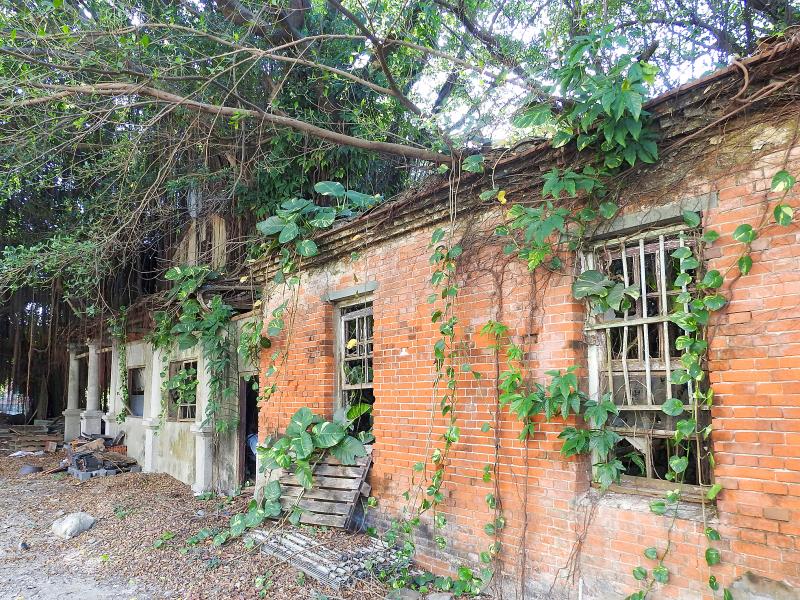
Photo: Steven Crook
THE DOCTOR’S ABODE
Less than 100m southeast of the Martial Temple (武廟) in Tainan’s Yanshui District (鹽水), there’s a walled plot about 2,700m2 (about 800 ping) in size. On it, largely obscured by banyan trees, stand the remnants of Weng Chung-wu’s Old House (翁鐘五故居).
It was built in 1943 for Weng Chung-wu (1896-1971), a doctor who had trained in Taipei and participated in the Taiwanese Cultural Association (台灣文化協會) prior to its suppression by the Japanese colonial authorities. Weng prospered between the 1930s and the 1960s. Following World War II, he served as a member of Tainan County Council.
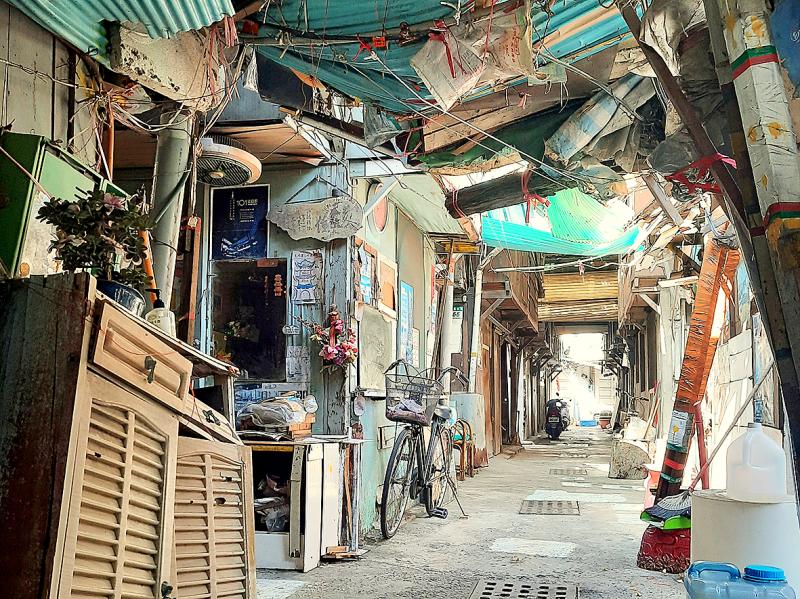
Photo: Steven Crook
His single-story brick-and-wood home faces south and combines a classical Chinese design with some unusual features, such as porches on either side. The eastern porch is much more intact than its counterpart on the west.
Overall, the building is in a terrible state. Trees have poked multiple holes through the roof and dominate the site so much that you’d need a machete to get inside. Not that this is recommended; even if you keep well back from the building, take considerable care, as the ground is thoroughly uneven. In the southeastern corner of the property, there’s an air-raid shelter.
The address that appears online for the house isn’t of much use, because the authorities revise street names and house numbers whenever old buildings are demolished and plots redeveloped. At least this what a neighbor told me when I asked her why address plates on one side of the road south of the old house read Lane 14, Minsheng Street (民生街14巷), while those on the other side bear the characters for Wenwu Street (文武街).
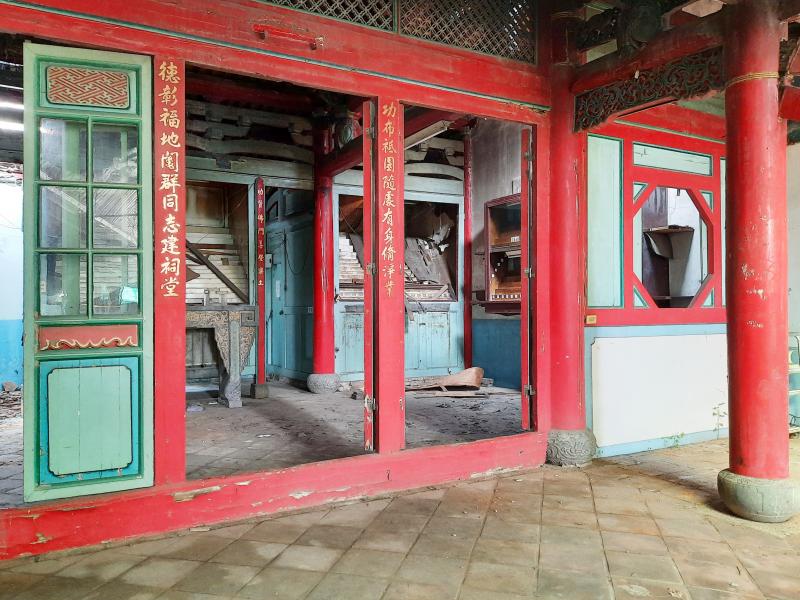
Photo: Steven Crook
I accessed the property via an unnumbered lane on which the biggest building is 85-2 Wumiao Road (武廟路). It’s also possible to sneak in via a yard filled with recyclables next to 6-1, Lane 14, Minsheng Street.
A PRE-QING TEMPLE
One of Tainan’s most historic houses of worship, Fahua Temple (法華寺) was established in 1675, during the brief period when Taiwan’s southwest was ruled by Ming loyalists opposed to the Qing Dynasty.
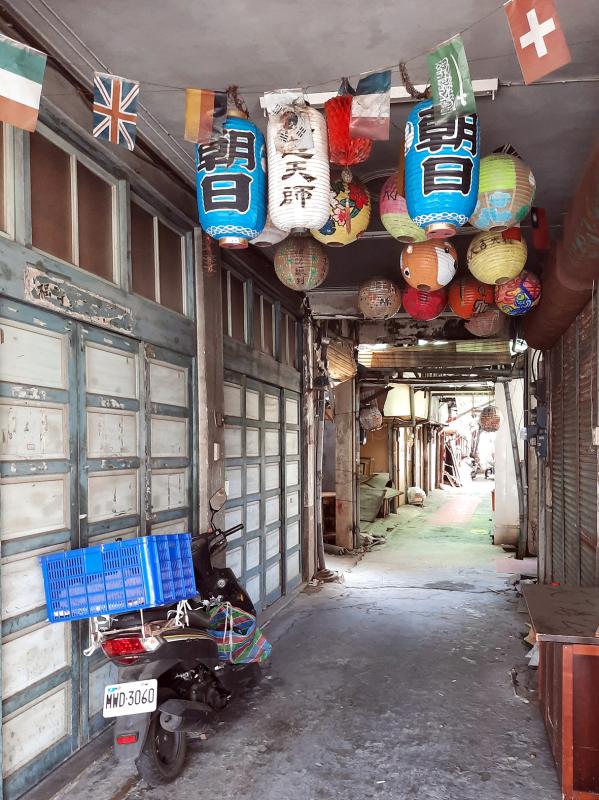
Photo: Steven Crook
This month, when I visited the temple for the first time in five-and-a-half years, I noticed that some of the debris I’d seen previously has been cleared away.
The site looks tidier since the removal of the half-collapsed pavilion that formerly covered Yanshou Bridge (延壽橋), but the western section of the complex has further deteriorated. Much of the roof has fallen in. The icons have been relocated.
Liberty Times (sister paper of Taipei Times) reported on Aug. 9, 2019 that formal proposals to restore Fahua Temple were made as long ago as 2003. However, for a long time the shrine’s management — led by a nonagenarian abbot — weren’t able to come to an agreement with the authorities.
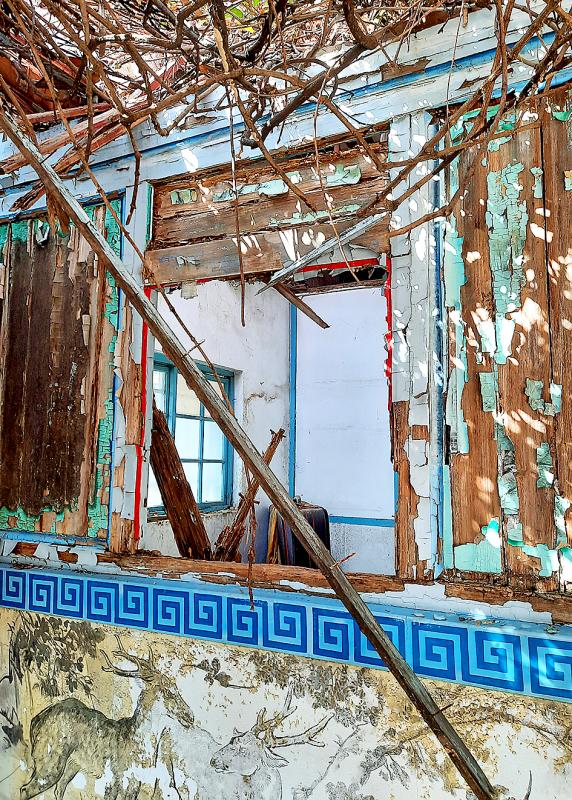
Photo: Steven Crook
After typhoons inflicted additional damage, the city government’s Cultural Heritage Administration stepped in and provided emergency support. In mid-2019, the Ministry of Culture promised NT$600,000 to subsidize renovation. I’ve not seen any subsequent announcements, however, and when I visited earlier this month, I saw no indication that work had begun.
Fahua Temple is at 100 Fahua Street (法華街) in Tainan’s West-Central District (中西區).
A HUB OF COMMERCE GONE QUIET
At the northern end of Lane 234, Minquan Road Section 3 (民權路三段234巷), very close to the intersection of Minzu Road Section 3 (民族路三段) and Jinhua Road Section 4 (金華路四段), a small but warrenous cluster of old shops is slowly falling apart.
It seems a few people still live in the tiny two-story shophouses that once functioned as Siejin Market (協進市場). The buildings are mainly wood, and the wiring is so haphazard that it’s a wonder the place hasn’t burned to the ground. Various materials, including corrugated metal and tarp, have been used to patch holes and keep out the rain. Yet, despite the mess, the place is visually engrossing.
I’ve not been able to confirm the age of the buildings or when the market gave up the ghost, but it seems they were here before 1975 and some of the shops were active as recently as 2009.
SMALLTOWN MOVIE THEATER
Cycling through Guanmiao District (關廟), I made a sudden halt when I realized that the tatty-looking building at 24 Renai Road (仁愛路) looked rather similar to some of the defunct movie theaters I’ve come across in Taiwan.
When I read the characters on its facade, I knew my hunch was right. Unlike dozens of its wall tiles, the first three quarters of the name by which this edifice was known, Jhongyang Theater (中央戲院), are still attached to the building.
The ticket booth is at street level, on the left as you face this late 1960s building. At the time of my visit, less than a month ago, the prices that prevailed when the theater went out of business in the late 1980s were still visible. Those eligible for concessionary tickets paid NT$50. For everyone else, tickets cost NT$60.
This mixed-use building originally had shops downstairs. As far as I could tell, none of the stores are still be in business. One, however, seemed to be the residence of an elderly man.
The doorway beside the ticket booth was half open, so I headed upstairs into the abandoned theater, checking with each step that the floor was solid and I wasn’t about to trip over debris.
Some of the 300-odd wooden seats have rotted away entirely, and few still look sturdy enough to take a person’s weight. Near the two projectors — their bulk, I’d guess, has protected them from looters — unspooled reels of film lay scattered over the floor. Light came in from two big holes in the roof.
There are people in Guanmiao who hope this landmark can be rescued. But surely the window of opportunity narrows every time a typhoon blows through, or an earth tremor shakes the town.
Steven Crook has been writing about travel, culture and business in Taiwan since 1996. He is the author of Taiwan: The Bradt Travel Guide and co-author of A Culinary History of Taipei: Beyond Pork and Ponlai.
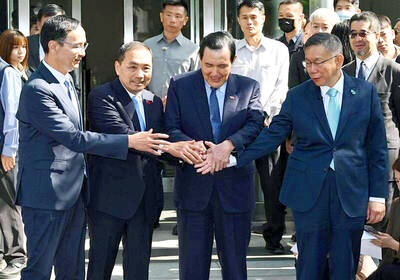
Has the Taiwan People’s Party (TPP) changed under the leadership of Huang Kuo-chang (黃國昌)? In tone and messaging, it obviously has, but this is largely driven by events over the past year. How much is surface noise, and how much is substance? How differently party founder Ko Wen-je (柯文哲) would have handled these events is impossible to determine because the biggest event was Ko’s own arrest on multiple corruption charges and being jailed incommunicado. To understand the similarities and differences that may be evolving in the Huang era, we must first understand Ko’s TPP. ELECTORAL STRATEGY The party’s strategy under Ko was

It’s Aug. 8, Father’s Day in Taiwan. I asked a Chinese chatbot a simple question: “How is Father’s Day celebrated in Taiwan and China?” The answer was as ideological as it was unexpected. The AI said Taiwan is “a region” (地區) and “a province of China” (中國的省份). It then adopted the collective pronoun “we” to praise the holiday in the voice of the “Chinese government,” saying Father’s Day aligns with “core socialist values” of the “Chinese nation.” The chatbot was DeepSeek, the fastest growing app ever to reach 100 million users (in seven days!) and one of the world’s most advanced and
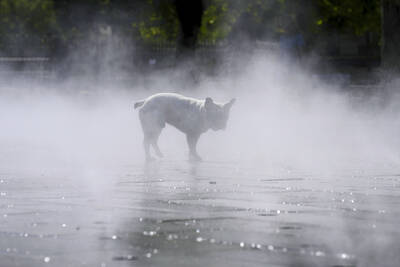
It turns out many Americans aren’t great at identifying which personal decisions contribute most to climate change. A study recently published by the National Academy of Sciences found that when asked to rank actions, such as swapping a car that uses gasoline for an electric one, carpooling or reducing food waste, participants weren’t very accurate when assessing how much those actions contributed to climate change, which is caused mostly by the release of greenhouse gases that happen when fuels like gasoline, oil and coal are burned. “People over-assign impact to actually pretty low-impact actions such as recycling, and underestimate the actual carbon

An internal Meta Platforms document detailing policies on chatbot behavior has permitted the company’s artificial intelligence creations to “engage a child in conversations that are romantic or sensual,” generate false medical information and help users argue that Black people are “dumber than white people.” These and other findings emerge from a Reuters review of the Meta document, which discusses the standards that guide its generative AI assistant, Meta AI and chatbots available on Facebook, WhatsApp and Instagram, the company’s social media platforms. Meta confirmed the document’s authenticity, but said that after receiving questions earlier this month, the company removed portions which stated